Birds on the Move
- Merri-Lee M.
- Sep 22, 2018
- 2 min read
As Summer draws to a close, many birds are passing through our area on their long journeys South. We saw a variety of avian migrants during banding sessions at Barbers’ farm near Fergus/Elora, on September 15th, and at SpruceHaven on September 19th. Because the 2 locations are completely different habitats, the birds found at each site were also quite different.
On September 15th, near Elora, we had a “Thrush morning”. Most of the birds banded were Swainson’s Thrushes, with their buffy eye rings, pink legs, and darkly-spotted breasts.

One of the Thrushes didn’t look like the others: note the gray colour on the face, and the lack of buffy markings. This is a Gray-cheeked Thrush.

The Ovenbird is more often heard than seen, and it was exciting to band this Juvenile...

the “head-stripe” is not nearly as rusty as it will be when this bird is mature.
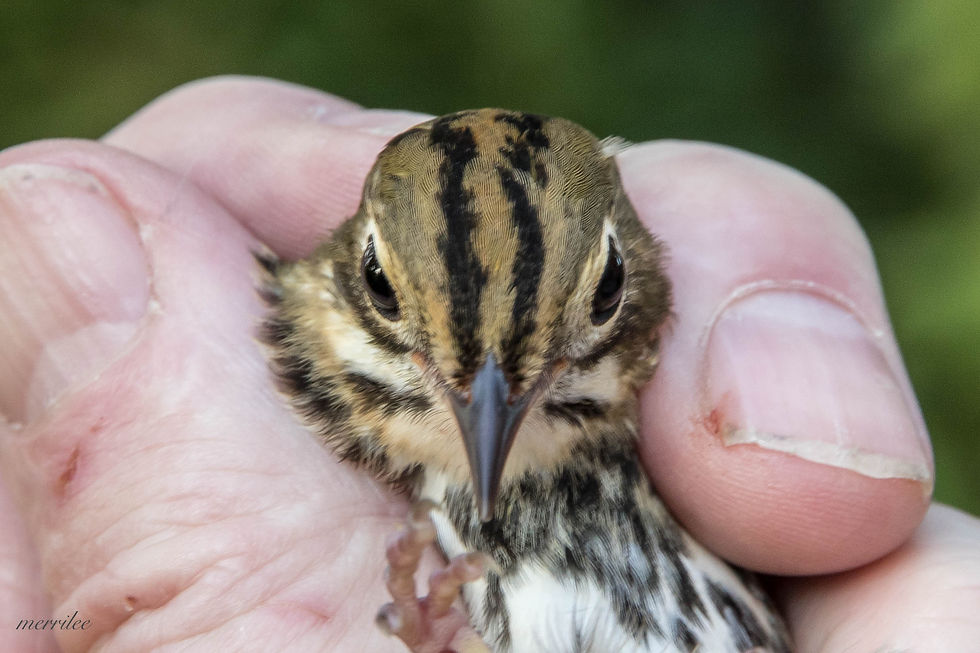
A Red-eyed Vireo, with the brownish eyes typical of a Juvenile, was a special treat.

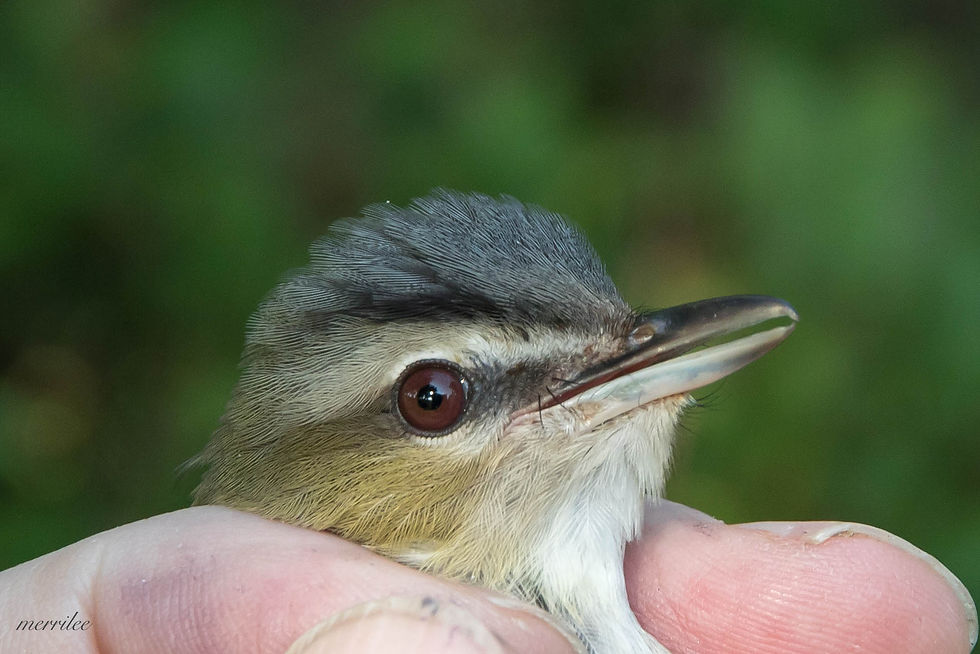
The noisy Yellow-shafted Flicker was definitely not the calmest bird of the morning!
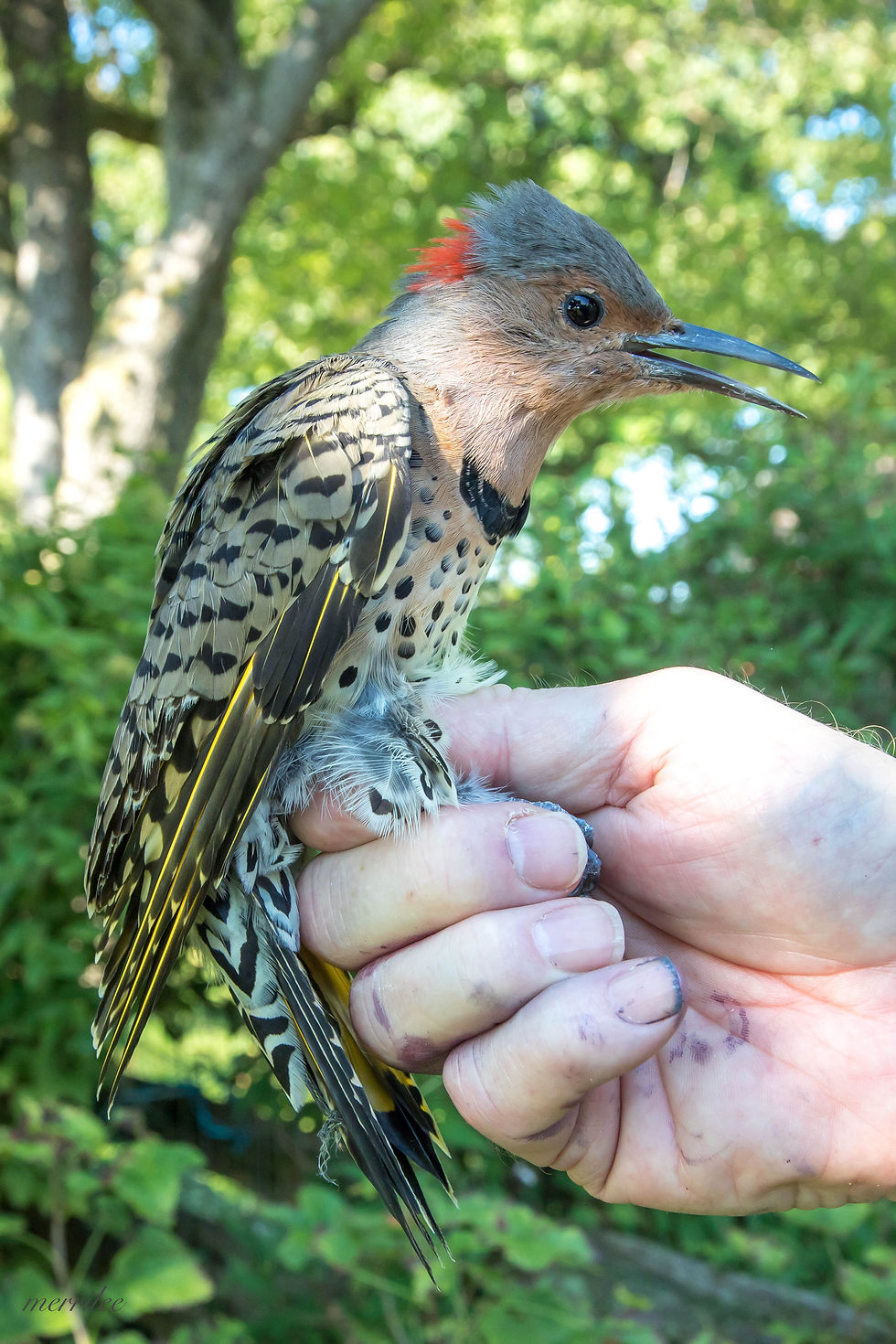

We banded 3 different kinds of Warblers:
Common Yellowthroat

Magnolia Warbler
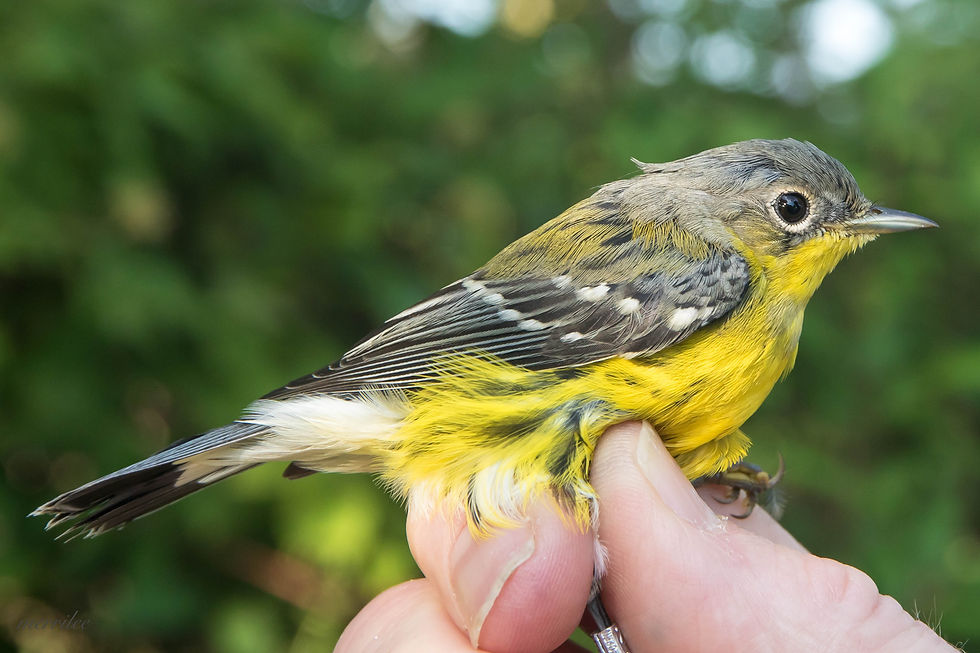
Nashville Warbler
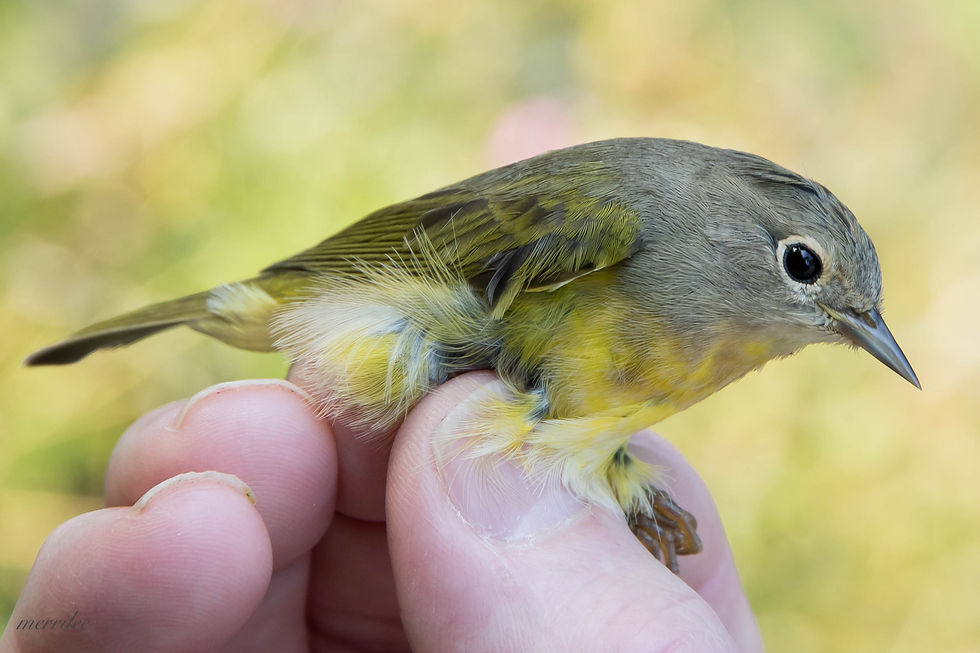
Tiny little creatures they are, in transit now on an incredible journey!
On September 19th, at SpruceHaven, the weather was perfect, and the birds cooperated wonderfully. We were thrilled to be visited by a mixed flock of Warblers at around 9 a.m.
8 Nashville Warblers, with their white eye rings, rusty little caps (Males), and yellow/white/yellow bellies, were banded.

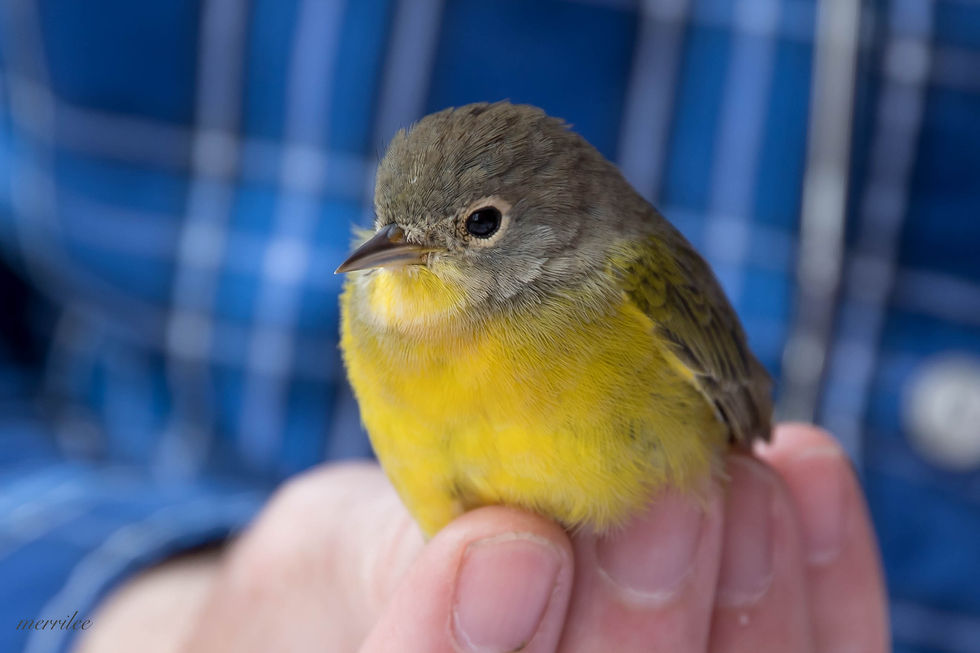
4 Magnolia Warblers, looking slightly grayer and less clearly marked than they will look in the Spring, were a welcome addition to the Warbler list!
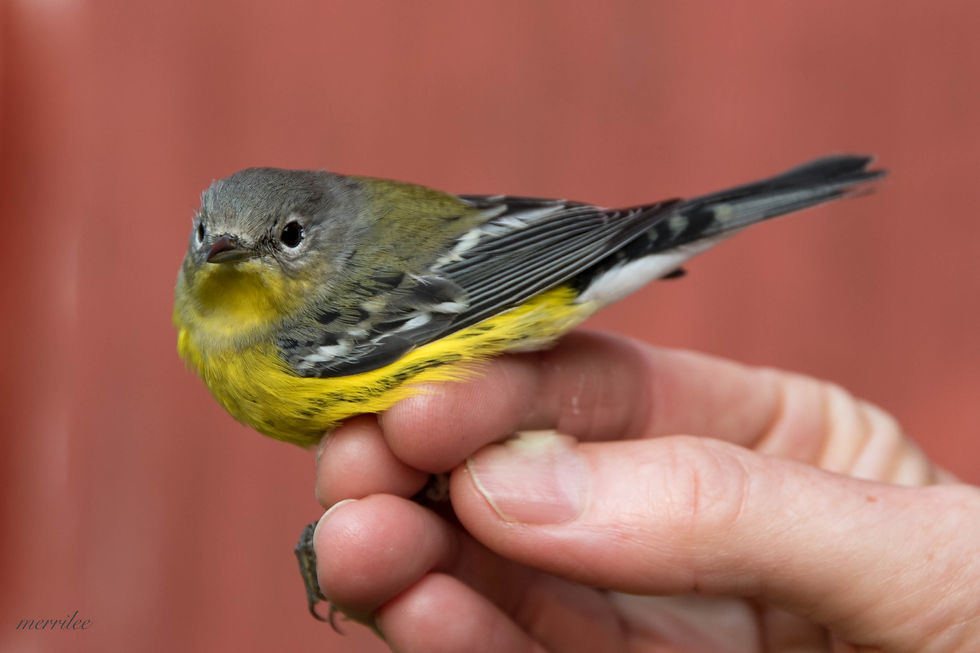

It was a real surprise to find a Northern Waterthrush, with its buffy facial markings and streaked breast.


This little Male Common Yellowthroat was still dressed in his summer colours; a second one was far less brilliantly coloured (and was a Female).

The Black-throated Green Warbler is distinctive. In the Spring, the Male will have a clearly defined black “bib”.


The Tennessee Warbler was a new one for me, and we banded 11 on Wednesday! The backs of these birds are an almost iridescent green colour, and there is a (somewhat muted in the Fall) black line through the eyes, and a white/light line above the eyes.
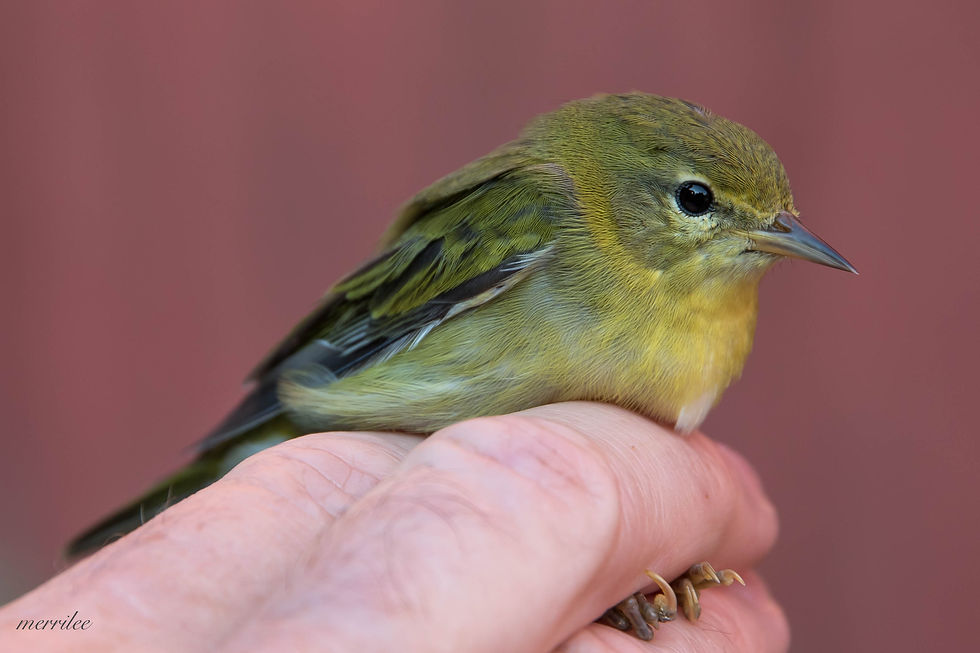

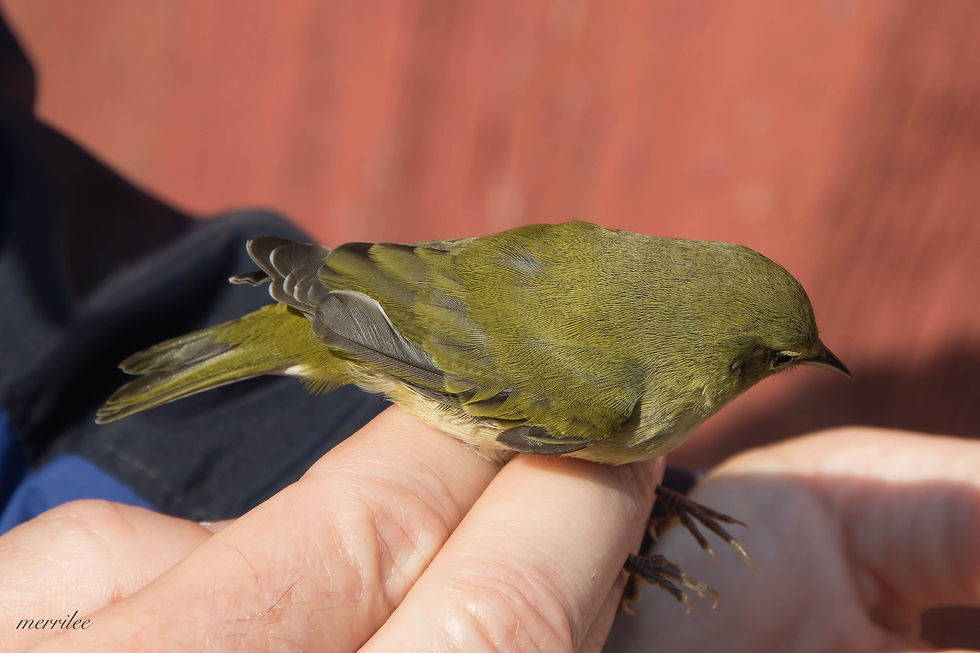
We could see a small portion of the black cap of a Male Wilson’s Warbler.


It was definitely a Warbler morning at SpruceHaven -- a grand total of 28 of the little guys. Throw in a Cardinal, a couple of Goldfinches and House Wrens, and a Yellow-shafted Flicker, and... the humans were kept hopping!
The previous week at SpruceHaven had yielded a few treasures as well. On September 12, we were delighted to find a young Indigo Bunting.


We also banded a beautiful Yellow-bellied Flycatcher, with its buttery yellow throat, light wing bars, flat bill, and “whiskers".


And now all of our little friends will be well on their way to wintering grounds. We wish them a safe journey as they embark on their migratory adventures.
Many thanks to Harry and Pat Barber, and the Westfalls, for sharing their wonderful properties with us and the birds!
Thanks, too, to David Lamble and Ross Dickson for their willingness to band some of the avian visitors that pass through.




Comments